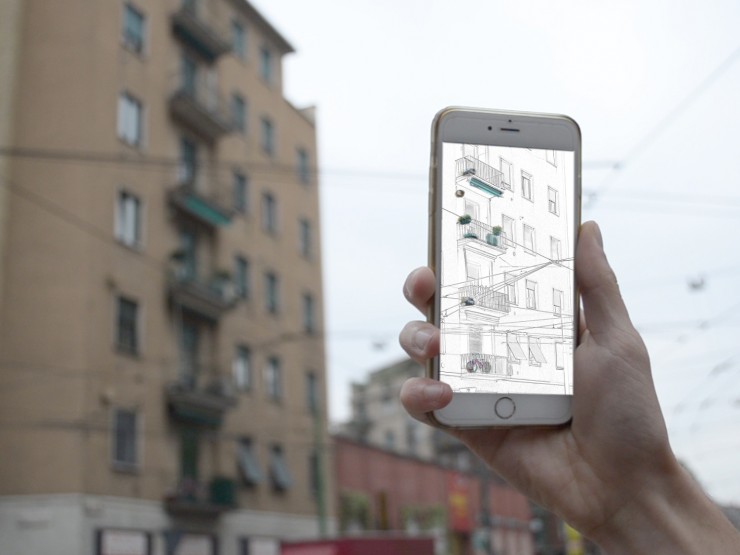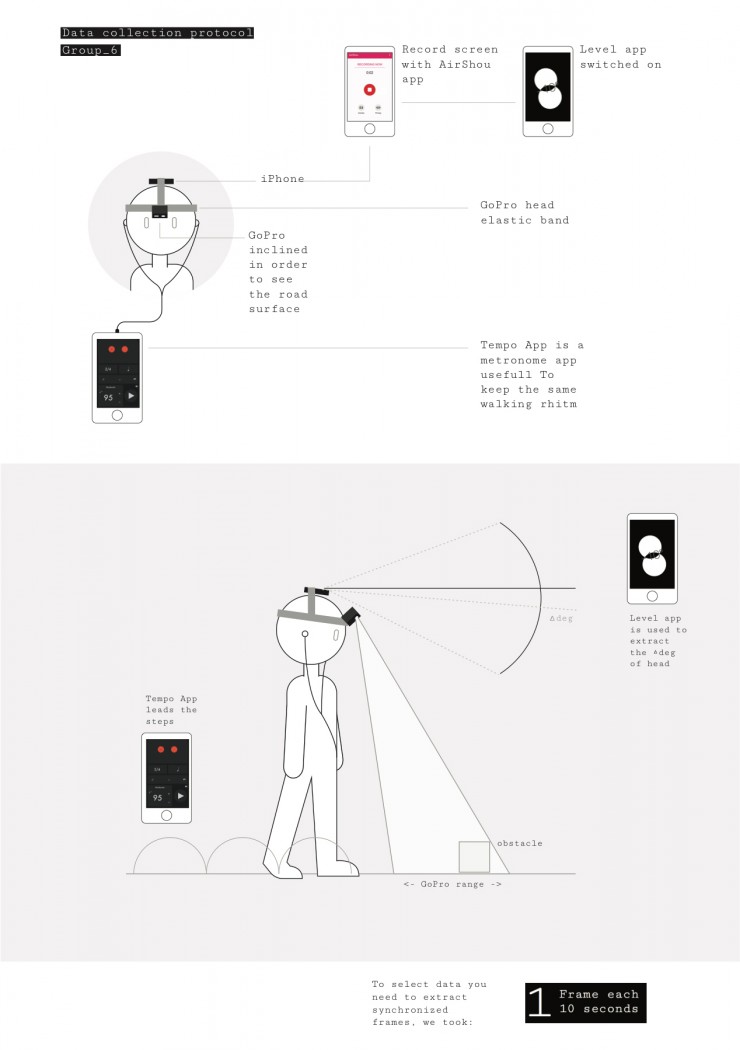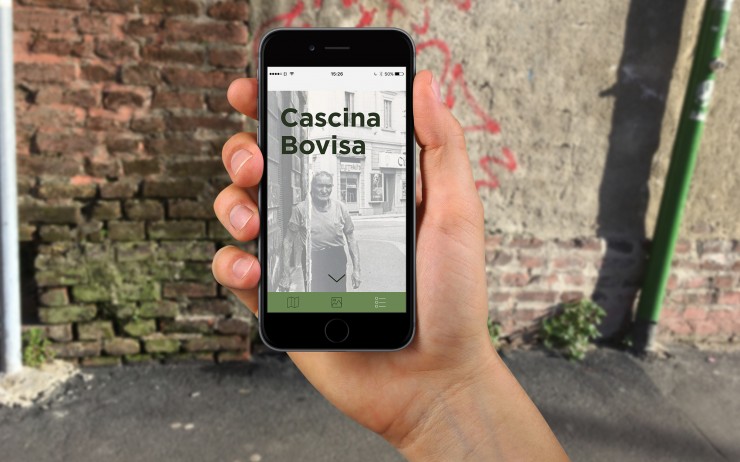Dear readers, the following post is a description of the outcomes of our latest experimental workshop held in May 2017 in Politecnico di Milano.
We’ve been lucky enough to have on our side Yanni Loukissas (from Georgia Tech), who not only outlined the structure of the experience and led the classes, but was even the writer of what is down here, so to him goes our most sincere thankfulness.
Enjoy the reading!
Overview
How can design put data in its place?
During a week in early May, I led a workshop at the Politecnico di Milano to investigate this question. A group of twenty-nine Communication Design students participated. They worked in small teams to explore the design opportunities and challenges posed by situating data in an unfamiliar setting: a walk.
Today, in 2017, we often think of data and place as being independent of one another (Loukissas 2016). Data are infinitely small, technical, and abstract while places are spatial, social and experiential. Nevertheless, data and place are linked. Indeed, “data walk” is not an oxymoron. For data can only be made and made sense of in places of production and display.
Data don’t live on the head of a pin, or a hard drive. Easy enough to say. Over the course of five days, I asked students to show how data and place are connected by designing walks that would take us through both data sets and data settings. Walking became the algorithm that allowed us to connect data and place in a series of surprisingly evocative encounters.
Student projects explored how practices of both collecting and displaying data might be critically reimagined through the structure of their walks. Walks gave rise to creative data collections: unconscious head motions, street stickers, discarded cigarette butts, minute changes in the skin. Walks also placed those data within and around the Bovisa campus of the Politecnico as: a prosthetic for walking, a soundscape, an ironic art installation, and a self-monitoring app. This range of rigorous and whimsical experiments helped us all reconsider the relationship between data and place.
The “Data Walks” workshop would not have been possible without the invitation and support of Paolo Ciuccarelli, professor and director of Communication Design at the Politecnico di Milano and Tommaso Elli, my teaching assistant and guide to Bovisa for the week. Additional thanks to all the members of Density Design Lab, who provided inspiration, moral support, and feedback.
The workshop was structured by a pair of exercises. Both explored the relationship between data and place, but in different ways:
Exercise 1. Walking for data collection
In the first exercise, students explored where data come from and how they are shaped by specific origins. This was not an abstract exercise. They learned hands-on how to make their own data sets. First, they identified a public route along which to collect data. Then, they selected a neglected or invisible subject encountered along that route as the focus of their data collection. I offered a selection of unorthodox procedures to help students develop reflexive collecting practices, such as “don’t categorize,” “use irregular measures,” “note absences,” “rely on your judgment,” and “record your own presence.” Students created and stored data using Flickr (a web app which captures images + metadata tags). Each data set captured (in its own way) what the original route looked like from the perspective of the selected subject. In the process, students learned just how human data collection can be.
Exercise 2. Walking for data display
In the second exercise, students considered the context in which new audiences might encounter their original data set. In this follow up assignment, students learned how data are affected by local settings for display. Still working in groups, they created short (~5 minute) data walks using the sets collected in exercise 1. Their data walks were both physical and informational traversals. They simultaneously took us through spaces and through a data sets, calling attention to the relationship between the data and its surrounding context. Each group choose a procedure to help shape their walk: “narrate,” “materialize,” “participate,” “layer,” or “zoom.” The results were evaluated on three criteria. Concept: what does the data walk help us learn about the local setting? Experience: what does the data walk feel like? And technique: how is the data walk made?
Outcomes
———
Your light data project
Team: Nicolò Fabio Banfi, Sofia Chiarini, Giulia Corona, Alessandra Del Nero
Group 1 collected data about the play of light and shadow on a walk through the Bovisa campus. They devised a prototype mobile app that guided walkers from the main entrance to the design building, assessing variations in lighting conditions along the way. Their data walk prompted us to reflect on how light affects our bodies, through changes in the look, feel, and underlying processes within our skin.
———
Decoding the street colours
Group 2 created a collection of 360-degree photographs, taken at points along the path from the Bovisa train station to the steps of the design building, then deconstructed those photographs into a series of place-based color spectra. Finally, the group assembled the spectra into an imaginative walking guide to the colors of Bovisa.
Team: Long Zhang, Valeria Brienza, Teng Yilin, Margot Llobera
———
Watch your butts
Team: Barbara Nardella, Francesco Cosmai, Francesco Giudice, Giulia Zerbini
Group 3 gathered discarded cigarette butts and displayed them ironically as annotated art pieces along the promenade from the Bovisa train station. A 2015 Italian law recently redefined cigarette butts discarded in the street as “trash.” The group’s data walk prompted us to reflect on the general category of trash and the specific stories that individual cigarette butts might tell.
———
Hyperglue
Team: Valeria Sonia Aufiero, Andrea Benedetti, Simone Costagliola, Alessandro Zotta
Group 4 assembled data on street stickers posted by local bands around Bovisa and subsequently reimagined those stickers as nodes in a sound walk. In their working prototype, each sticker functioned as a virtual speaker that diffuses music. As you got closer to a band’s sticker, the volume of their track increased. When you walked through areas dense with stickers, multiple music tracks played over one another, creating an unexpectedly entertaining cacophony.
———
Museum of details
Team: Alicia Gonzalez, Emanuele Innocenti, Nikita Kulikov, Ludovico Pincini, Yining Zou
Group 5 led us on a circular walk through a “museum of details” composed of artifacts left on the balconies surrounding a prominent round-about in Bovisa. The project encouraged interactions between walkers and owners of the artifacts through the use of a simple augmented reality experience and postcards, which invited comments or even offers to purchase the artifacts left out for view.
———
Mind your step
Team: Sara Batisti, Vincenzo Bisceglia, Nicola Cerioli, Mattia Virtuani
Group 6 asked us to attend, reflexively, to the way we walk. How often do you watch your feet? Are you aware of your surroundings? Using the accelerometer in an iPhone in coordination with a GoPro, the group constructed an effective method for reflecting on one’s walking habits during the daily commute from the Bovisa station to the Politecnico gates. (Team: Sara Batisti, Vincenzo Bisceglia, Nicola Cerioli, Mattia Virtuani)
———
Behind
Team: Alessia Bissolotti, Mara Cominardi, Serena Del Nero, Marco Mezzadra
Group 7 led us on an archeological investigation of cracks in the architecture of Bovisa, and prompted us to consider their significance as markers of both historical and environmental change. Their prototype mobile app treated cracks as opportunities to peel back the surface of the city and peer into its past.
———
Dipartimento di Design, Politecnico di Milano
May 8-12, 2017
Post by Yanni Loukissas (Visiting Instructor), special Thanks to Paolo Ciuccarelli (Program Director) and Tommaso Elli (Teaching Assistant).
For more information on this workshop and other activities hosted by the Local Data Design Lab, contact http://yanni.loukissas@lmc.gatech.edu










